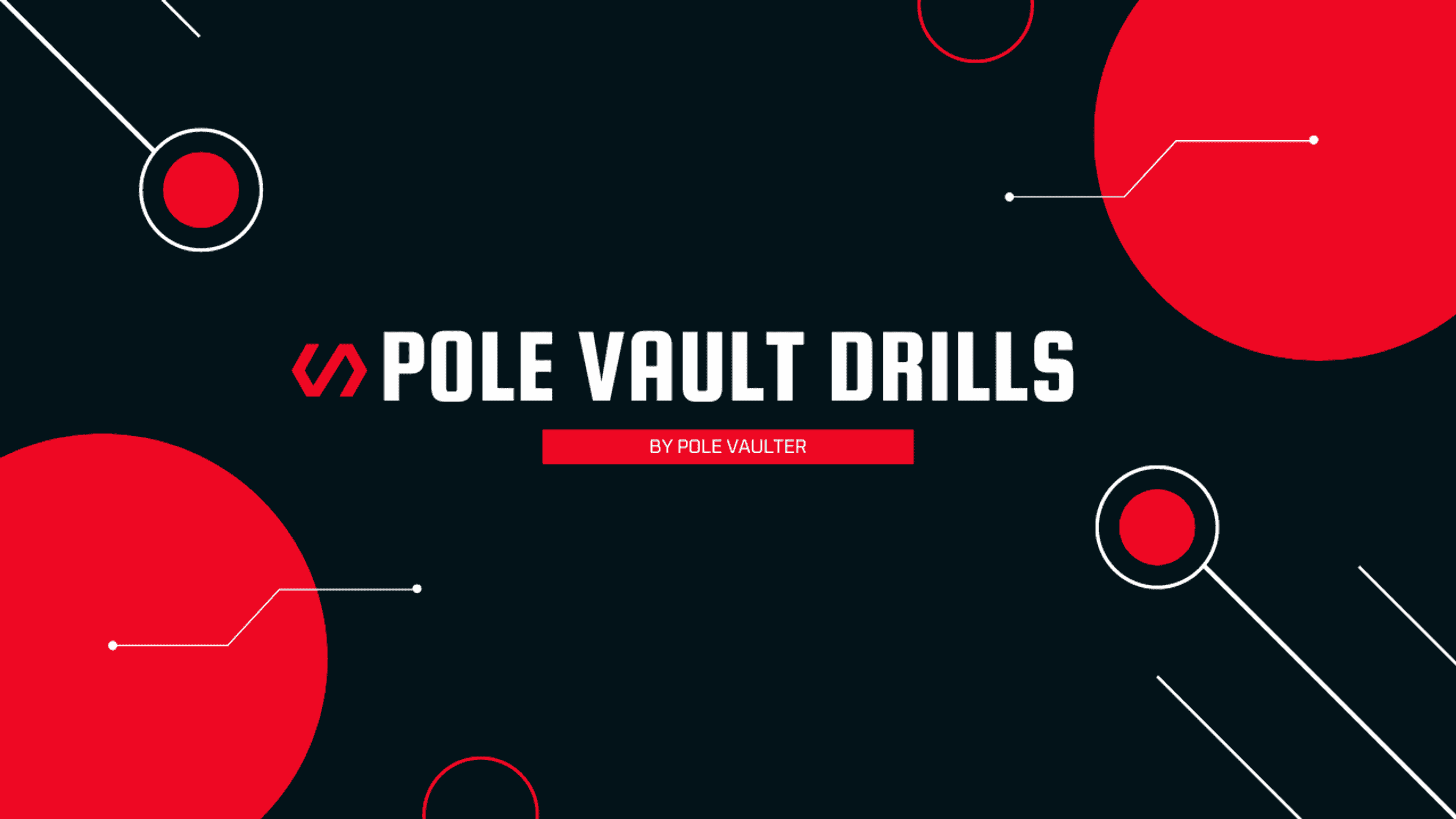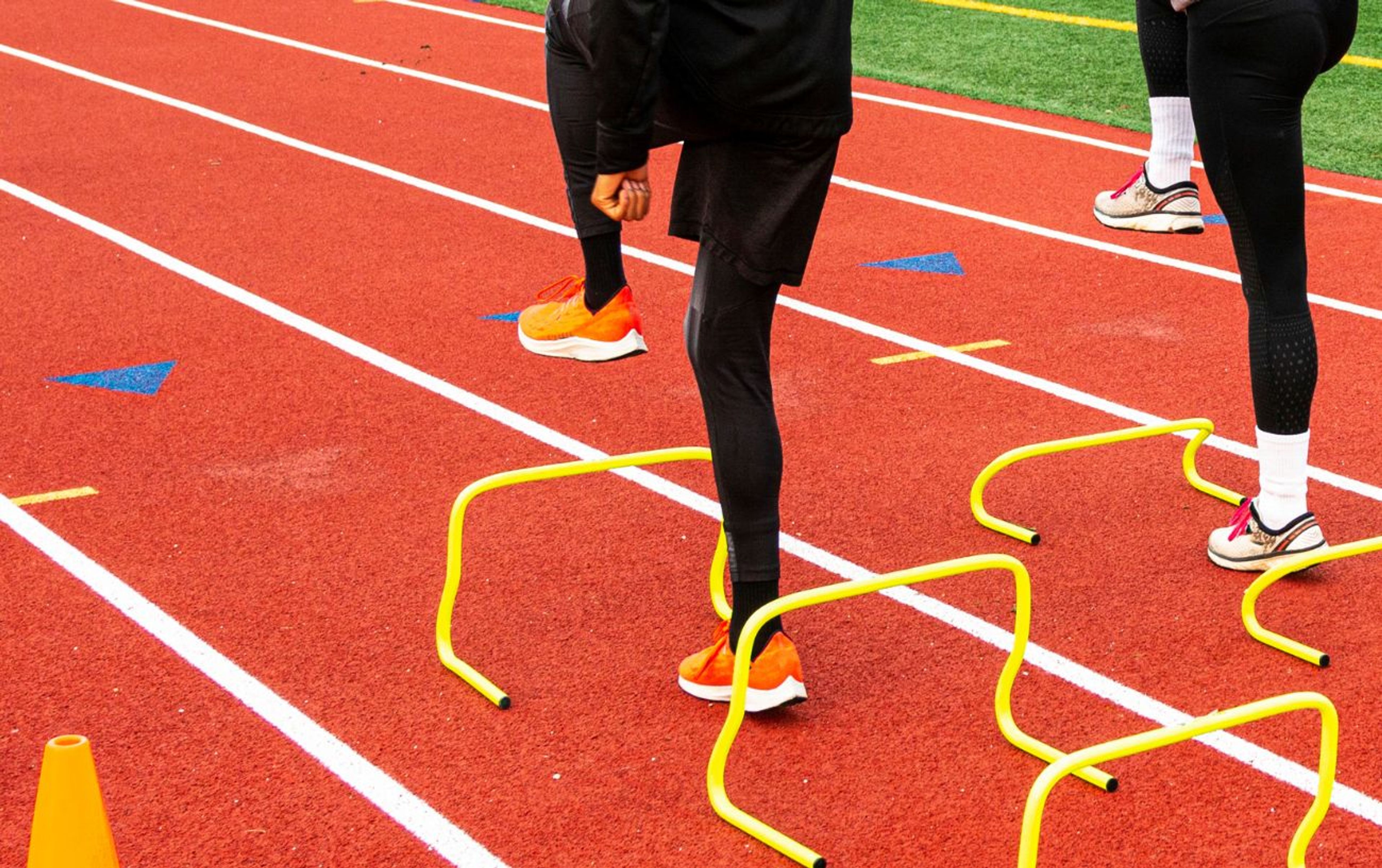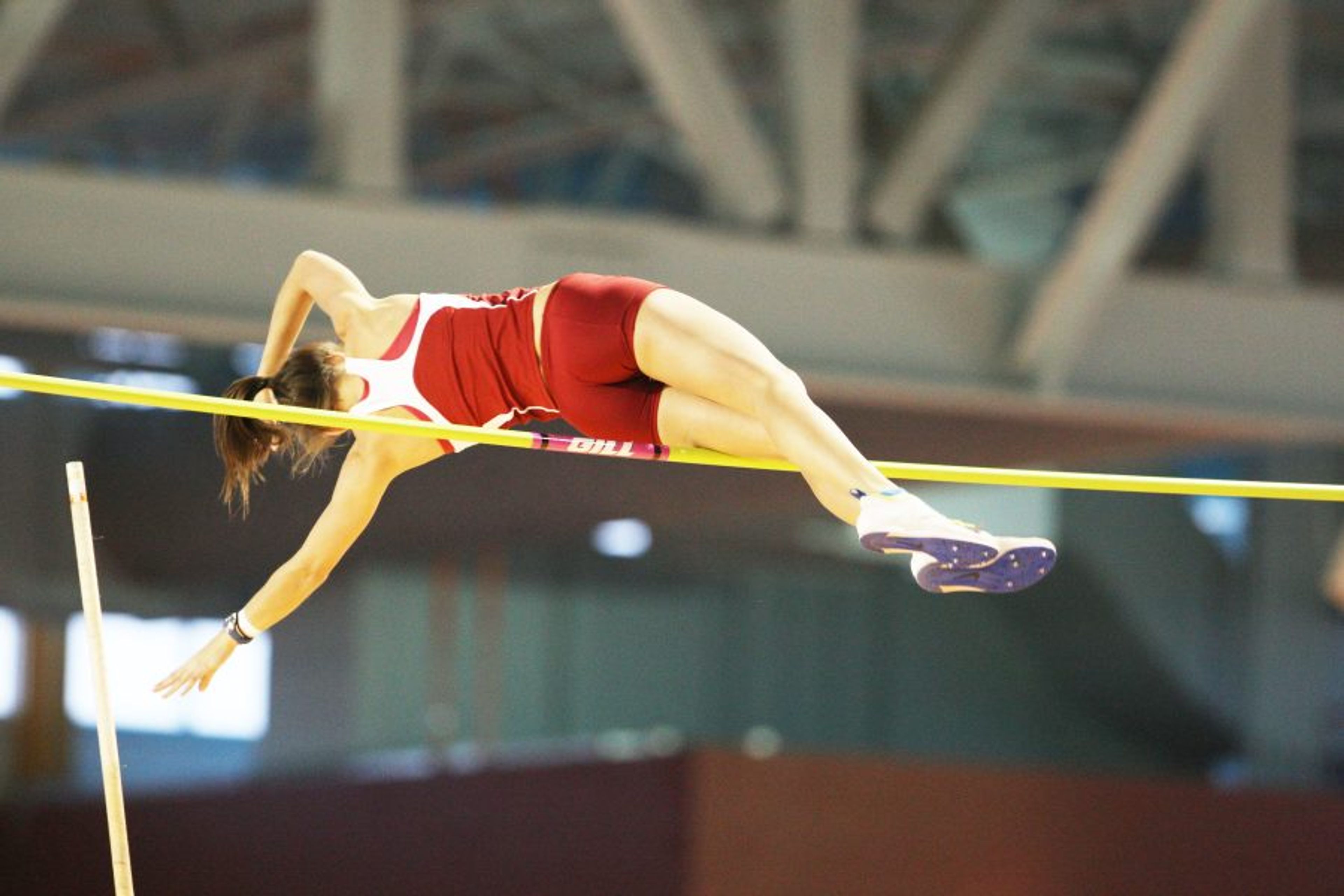How Do You Train for Pole Vault? 10 Exercises You Can Do at Home
Discover how to train for the pole vault, including drills and exercises you can do at home.
Pole vaulting is a sport that demands a unique blend of speed, strength, and technique from a pole vaulter. For high school pole vaulters, maintaining and enhancing these skills is crucial, even when access to a pole vault pit and track is limited. This article provides a comprehensive guide to pole vault exercises that can be done at home to improve speed, strength, and technique.
Understanding Pole Vaulting Basics
Pole vaulting is a complex and technical sport that requires a combination of strength, speed, and technique. To understand the basics of pole vaulting, it’s essential to break down the different components of the event. The pole vault consists of three main phases: the approach run, the plant, and the take-off.
The approach run is the initial phase of the pole vault, where the athlete sprints down the runway, building up speed and momentum. This phase is crucial as the speed generated here translates into the energy needed for the vault. The plant phase is where the athlete plants the pole in the metal box, using their strength and technique to generate power and propulsion. This phase requires precise timing and coordination to ensure a smooth transition into the take-off. The take-off phase is where the athlete uses the pole to propel themselves over the bar, relying on their speed, strength, and technique to clear the height. This phase demands explosive power and excellent body control.
To master the basics of pole vaulting, athletes must develop a strong foundation in strength training, speed training, and technique. This includes building strength in the upper body, lower body, and core, as well as developing muscle memory through repetition and practice. By focusing on these key areas, athletes can improve their overall performance and achieve greater heights in their pole vaulting endeavors.
Building a Pole Vault Training Program
Building a pole vault training program requires a structured and periodized approach. A well-designed program should include a combination of strength training, speed training, and technique drills, tailored to the individual athlete’s needs and goals.
Strength training exercises should focus on building strength in the upper body, lower body, and core. This can include weight lifting, medicine ball exercises, and bodyweight exercises such as pull-ups and squats. These exercises help develop the muscle power needed for explosive takeoffs and controlling the body in the air. Speed training should focus on building speed and power, through exercises such as sprinting, hill sprints, and resistance band training. These drills enhance the athlete’s ability to generate the necessary momentum during the approach run.
Technique drills should focus on developing muscle memory and improving technique. This can include drills such as step-ups, run-in-place, and short run long jumps. These drills should be done regularly, with a focus on proper form and technique. Consistent practice of these drills helps athletes refine their movements and improve their overall efficiency.
A pole vault training program should also include regular practice sessions, where athletes can work on their technique and build their strength and speed. These sessions should be structured and focused, with a clear plan and goals in mind. By following a comprehensive training program, athletes can systematically improve their pole vaulting skills and achieve their performance goals.
Strength Training Exercises
Strength training is vital for building the muscle power needed for explosive takeoffs and controlling your body in the air. Incorporating strength training in the weight room, such as barbell cleans and heavy lifting, is crucial for building the muscle power needed for explosive takeoffs.
Bounding Exercises
Bounding exercises are essential for developing explosive leg strength and fast-twitch muscle fibers, which are critical for the quick, powerful movements required in pole vaulting. Single-leg bounds involve leaping forward off one leg, landing on the same leg, and then immediately leaping forward again. Double-leg bounds require jumping forward with both legs, focusing on both height and distance. Alternating bounds, where you leap forward with one leg and land on the opposite leg, further enhance coordination and balance. These variations ensure that you target different aspects of your leg muscles, improving overall performance.
How to do it:
1. Single-Leg Bounds: Leap forward off one leg, landing on the same leg, and immediately leap forward again. Perform 3 sets of 10 bounds per leg.
2. Double-Leg Bounds: Jump forward with both legs, focusing on height and distance. Perform 3 sets of 15 bounds.
3. Alternating Bounds: Leap forward with one leg and land on the opposite leg. Perform 3 sets of 20 bounds.
Training For Pushing Muscles
Building strength in your chest, shoulders, and triceps is essential for powerful pole plants and driving your body upwards during the vault. Push-ups are a versatile exercise that can be modified by using parallettes to reduce wrist strain and allow for a greater range of motion. Medicine ball throws, if you have a medicine ball, are excellent for developing explosive power in your upper body; simply perform chest passes against a wall. Bodyweight shoulder presses, performed by using a wall to press your bodyweight up, mimic handstand push-ups and are great for shoulder strength. Tricep-focused push-ups, done with hands closer together, specifically target the triceps, which are crucial for the push phase in vaulting.
How to do it:
1. Push-Ups: Standard push-ups or use parallettes to reduce wrist strain. Perform 3 sets of 15-20 reps.
2. Medicine Ball Throws: Perform chest passes against a wall. Perform 3 sets of 10 throws.
3. Bodyweight Shoulder Press: Use a wall to press your bodyweight up. Perform 3 sets of 10 reps.
4. Tricep Focused Push-Ups: Perform push-ups with your hands closer together to target the triceps. Perform 3 sets of 10-15 reps.
Training For Pulling Muscles
Strong pulling muscles are crucial for the swinging and rock-back phases of the vault, as they help control and propel your body. A pull-up circuit, including standard, chin, and wide-grip pull-ups, provides a comprehensive workout for your back and biceps. Bicep curls can be done using resistance bands or light weights to isolate and strengthen the biceps. Inverted rows, which can be performed using a sturdy table, are an excellent exercise for working the back muscles in a different plane of motion compared to pull-ups. These exercises together ensure that your pulling muscles are strong and resilient.
How to do it:
1. Pull-Up Circuit: Perform pull-ups, chin-ups, and wide-grip pull-ups. Perform 3 sets of 5-10 reps each.
2. Bicep Curls: Use resistance bands or light weights for bicep curls. Perform 3 sets of 15 reps.
3. Inverted Rows: Use a sturdy table to perform inverted rows. Perform 3 sets of 10-15 reps.
Speed Training Drills
Speed is essential for generating the necessary momentum during the approach. These drills will help you develop explosive speed.
Hill Sprints
Hill sprints are one of the most effective ways to improve power and running mechanics, essential for a fast approach in pole vaulting. The incline forces your muscles to work harder, improving both strength and speed. Walking back down the hill to recover fully before the next sprint ensures that you maintain maximum effort during each sprint. Perform 5-10 sprints to build explosive power and improve cardiovascular endurance, both of which are crucial for an effective approach run.
How to do it:
1. Find a nearby hill with a moderate incline.
2. Sprint up the hill at maximum effort, focusing on powerful, explosive strides.
3. Walk back down the hill to recover fully before the next sprint.
4. Perform 5-10 sprints.
Speed Bounding Drills
Bounding drills are excellent for developing leg power and stride efficiency, crucial for the approach run in pole vaulting. Single-leg bounds involve leaping forward on one leg, which helps improve balance and coordination. Double-leg bounds focus on both height and distance, enhancing explosive strength in both legs. Stair bounds, where you use the stairs to perform bounds, provide a varied and challenging workout for your legs. These exercises mimic the dynamic movements of pole vaulting, making them highly effective for building the necessary power and agility.
Lateral Bounds
Lateral bounds focus on improving lateral strength and stability, which can enhance overall agility and coordination.
How to do it:
1. Stand with your feet shoulder-width apart.
2. Push off your right foot to leap to your left side, landing softly on your left foot.
3. Immediately push off your left foot to bound to your right side.
4. Continue bounding side-to-side, focusing on distance and control.
5. Perform 3 sets of 10 bounds per side.
Skipping Bounds
Skipping bounds combine the explosive power of bounding with the rhythm and coordination of skipping, enhancing both leg strength and timing.
How to do it:
1. Start by skipping forward, driving your knee up high and pushing off the ground with the opposite foot.
2. Focus on gaining height and distance with each skip.
3. Keep your arms swinging naturally to maintain balance.
4. Perform 3 sets of 20 bounds, aiming for maximum height and distance on each bound.
High Knee Bounds
High knee bounds help improve stride frequency and knee drive, essential for a powerful sprinting form.
How to do it:
1. Start with a slow jog, then transition into bounding by driving your knees up high with each step.
2. Push off the ground forcefully with each stride, aiming to cover as much ground as possible.
3. Maintain an upright posture and use your arms to drive your movement.
4. Perform 3 sets of 15 bounds, focusing on height and knee drive.
Bodyweight Leg Exercises
Bodyweight exercises are great for building leg strength and endurance without the need for any equipment. Bodyweight squats are fundamental for developing overall leg strength and stability. One-legged squats, or pistol squats, are more advanced and help improve balance, coordination, and strength in each leg individually. Calf raises can be done using the stairs to target the calves specifically, which are important for the push-off phase in sprinting and jumping. These exercises ensure that your legs are strong and resilient, ready for the demands of pole vaulting.
How to do it:
1. Bodyweight Squats: Perform 3 sets of 20-30 reps.
2. One-Legged Squats (Pistol Squats): Perform 3 sets of 5-10 reps per leg.
3. Calf Raises: Use the stairs to perform calf raises. Perform 3 sets of 20 reps.
Pole Vault Training Program
These pole vault drills focus on the movements and techniques required for pole vaulting, helping you build muscle memory and improve your form.
Pole Drops
Practicing pole drops is crucial for a smooth and effective takeoff. Using a broomstick or light pole, hold the pole at your starting grip height and simulate your plant motion. Focus on driving the top hand upwards and planting the pole firmly, as this will help develop the muscle memory needed for a consistent plant. Perform 3 sets of 10-15 reps to ingrain the proper technique into your muscle memory, ensuring a smooth transition during your actual vaults.
How to do it:
1. Use a broomstick or light pole.
2. Hold the pole at your starting grip height.
3. Simulate your plant motion, focusing on driving the top hand upwards and planting the pole firmly.
4. Perform 3 sets of 10-15 reps.
Pole Runs
Pole runs help improve your approach and plant timing, which are critical components of a successful vault. Using a broomstick or light pole, perform a run-up as you would on the track, focusing on proper pole carry and plant timing. This drill helps you synchronize your steps with the pole plant, ensuring a fluid and powerful takeoff. Perform 3 sets of 5-10 runs to build consistency and confidence in your approach.
How to do it:
1. Use a broomstick or light pole.
2. Perform a run-up as you would on the track, focusing on proper pole carry and plant timing.
3. Perform 3 sets of 5-10 runs.
Wall Drills
Wall drills simulate the pole drop and plant phases, helping you improve your form and technique by having you stand facing a wall. Stand 3 steps away from the wall and start standing still with your takeoff foot lifted off the ground. Your pole should be horizontal to the ground, your bottom arm should be out in front of your chin, and your top arm should be tucked up by your ribs. Walk forward and drop the pole, planting it against the wall. Be tall and reach as high as possible, allowing your arms to push up so there is space for your chest to drive in and create a stretch. This exercise helps develop the proper mechanics and muscle memory for a smooth plant and takeoff. Perform 3 sets of 10-15 reps to reinforce the correct movements and improve your overall technique.
How to do it:
Stand 3 steps away from the wall with your takeoff foot lifted off the ground.
Hold the pole horizontally, with your bottom arm out in front of your chin and your top arm tucked by your ribs.
Walk forward, drop the pole, and plant it against the wall.
Be tall and reach as high as possible, pushing your arms up to create space for your chest to drive in and stretch.
Perform 3 sets of 10-15 reps.
Bubkas and Swinging Bubkas
Bubkas and swinging bubkas are excellent for developing core strength and mimicking the rock-back and swing phases of the vault. For bubkas, hang from a pull-up bar, tuck your knees to your chest, then extend your legs upwards, focusing on control and smooth movement. Swinging bubkas involve swinging your legs back and forth while hanging, then tucking and extending upwards. These exercises target your core muscles, crucial for stability and power during the vault. Perform 3 sets of 5-10 reps each to build a strong, stable core.
How to do it:
1. Bubkas: Hang from a pull-up bar, rock back and swing your legs up until they're touching the bar, then extend your heels upwards while dropping your shoulders. Lower your legs back down to your starting position and do it again. Perform 3 sets of 5-10 reps.
2. Swinging Bubkas: Hang from a pull-up bar, put your drive knee up and swing your trail leg, then tuck and extend upwards. Perform 3 sets.






